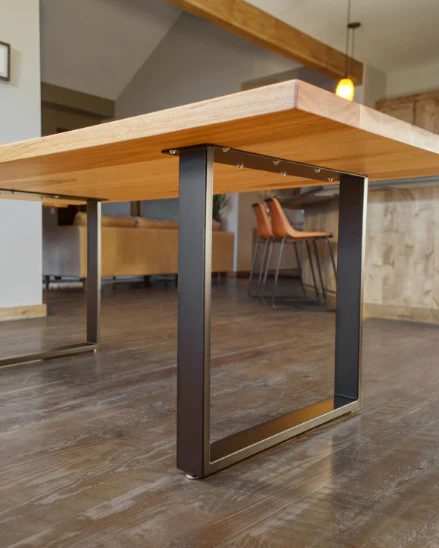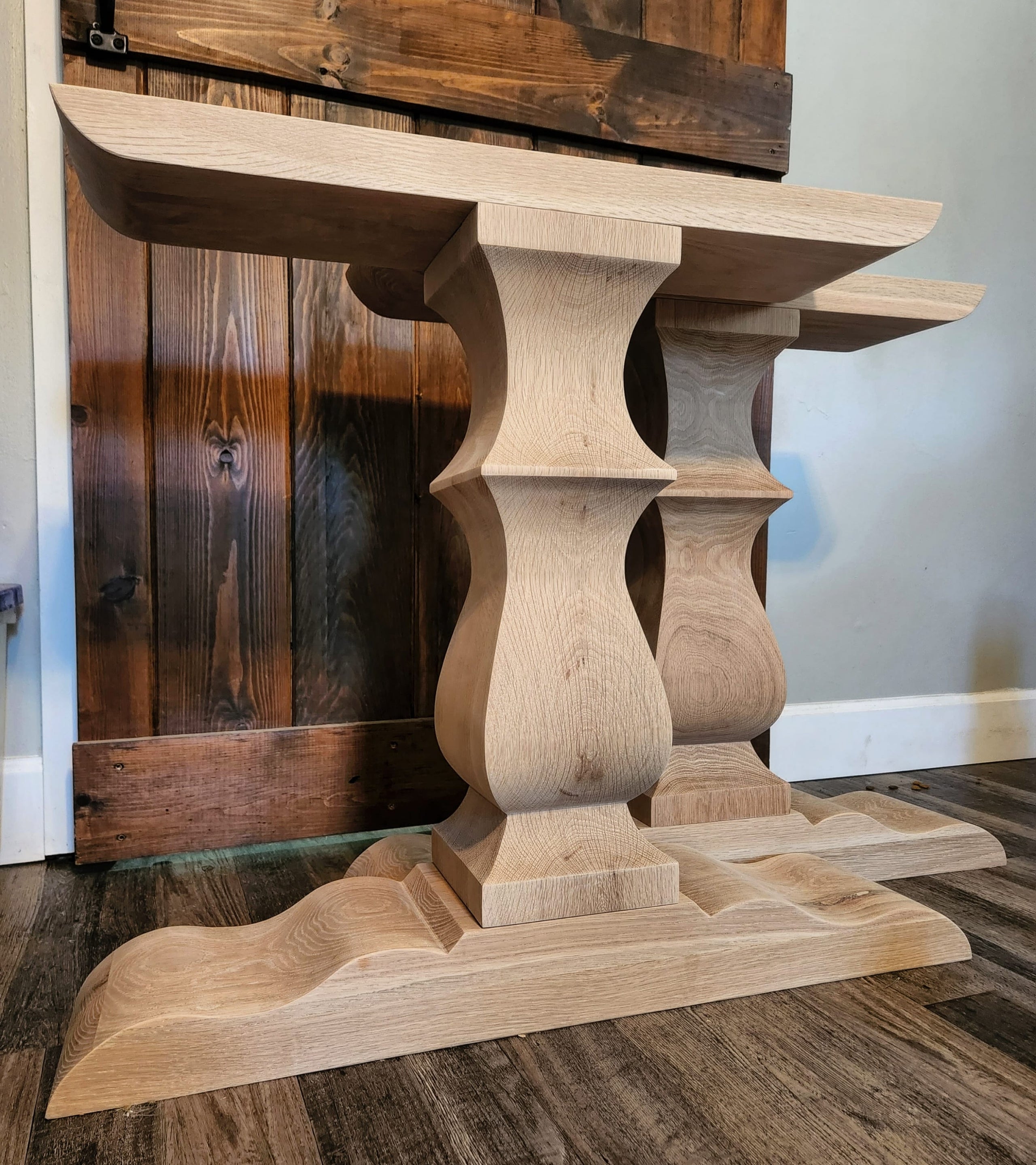Dining Room Table Legs: A Guide to Selecting the Right Style for Your Home
Dining Room Table Legs: A Guide to Selecting the Right Style for Your Home
Blog Article
Exactly How to Choose the Perfect Eating Area Table Legs for Your Home Décor
Choosing the optimal dining space table legs is a nuanced procedure that requires mindful consideration of numerous components, including your room constraints, aesthetic choices, and useful requirements. The interaction between designs, products, and dimensions can considerably affect the atmosphere of your dining area, making it important to approach this choice carefully.
Assess Your Dining Space
Analyzing your dining room is important for selecting the right table legs that enhance both aesthetics and functionality. Begin by measuring the dimensions of your eating area, including ceiling elevation, flooring area, and closeness to various other furnishings. This information will aid figure out the appropriate dimension and height of your table, which straight affects the choice of table legs.
Following, think about the design and format of your eating area. For circumstances, an open-concept layout might benefit from table legs that use visual agility, such as slim steel or acrylic choices. On the other hand, a more conventional setting might require durable wooden legs that give a sense of permanence.
Evaluate the existing shade scheme and materials in your dining area. Harmonizing the table legs with these components develops a natural appearance that boosts the total decor. In addition, consider the performance needed in your space. If you frequently organize large events, think about legs that supply extra assistance and security.
Eventually, a comprehensive assessment of your eating room will assist you in making an informed choice, ensuring that your table legs not just enhance the visual appeal yet additionally offer sensible purposes.
Consider Your Style Preferences
When selecting eating space table legs, it is vital to reflect on your personal style choices, as they significantly influence the total visual of your dining room. Your choice of table legs can either complement or contrast with existing decoration, making it critical to straighten them with your recommended interior decoration style.
If your home leans in the direction of a modern visual, think about smooth metal or minimal wood legs that provide a clean, minimalist appearance. For a much more typical strategy, luxuriant wood legs with elaborate carvings can add a touch of style and refinement. Industrial styles take advantage of robust, resources such as reclaimed timber and metal combinations, mirroring a rugged charm.
Furthermore, farmhouse and rustic styles often prefer strong, beefy legs that evoke a feeling of heat and comfort. Conversely, if your décor is diverse, you may select unique forms or a mix of products to produce aesthetic interest.

Evaluate Material Options
The selection of product for dining area table legs plays an essential role in both sturdiness and aesthetic charm. Usual products include wood, metal, and composite alternatives, each offering distinctive qualities that can influence the total appearance and long life of your table.
Wood is a classic selection, recognized for its warmth and versatility. Hardwoods like oak and walnut supply remarkable strength and can be finished in numerous discolorations to match any kind of decoration. Softwoods like want are a lot more prone to scratches and damages, making them much less suitable for high-traffic locations.
Steel legs, often crafted from steel or light weight aluminum, radiate modernity and industrial beauty. They are very sturdy and immune to put on, making them appropriate for households with youngsters or frequent gatherings (dining room table legs). Additionally, metal can be completed in various colors, boosting the personalization opportunities
Composite products, such as MDF or laminate, offer affordability and diverse styles. While commonly less durable than strong wood or steel, they can still offer a trendy look and are commonly easy to maintain.
Ultimately, the material you select need to line up with your lifestyle, aesthetic choices, and the level of usage your table will experience.
Determine Height and Dimension
Choosing the ideal height and dimension for your eating area table is crucial for both capability and convenience. The standard elevation for dining tables normally ranges from 28 to 30 inches, permitting enough legroom for the majority of people when seated. It is crucial to consider the measurements of your eating room and the kinds of chairs you prepare to make use of.

Furthermore, consider the percentages of your dining-room. A larger table in a spacious area can produce a grand ambiance, while a smaller sized table functions well in more intimate setups. Inevitably, the right height and size will harmonize with your overall decor and enhance the dining experience for you and your visitors.
Explore Personalization Opportunities

In addition, the layout of the legs can be tailored to fit different styles, such as rustic, modern-day, or commercial. For circumstances, tapered legs can stimulate a mid-century modern-day feel, while chunky, block-style legs may resonate with conventional or farmhouse style.
Property owners can likewise explore color coatings, from all-natural timber stains to repaint, allowing them to match or contrast with the table top and surrounding design.
In addition, leg elevation can be readjusted to accommodate details seating plans or individual preferences, improving both comfort and performance.
Finally, special decorations, such as carvings or ornamental brackets, can further individualize the table legs, making the dining experience not simply a meal but a statement item in the home. By considering these customization options, property owners can create a dining-room table that genuinely reflects their uniqueness.
Conclusion
Selecting the ideal dining area table legs needs careful factor to consider of numerous factors, including the measurements websites of the eating room, style preferences, product toughness, and wanted elevation. Modification alternatives even more improve the ability to achieve a natural aesthetic that enhances the overall decor. By systematically evaluating these aspects, house owners can ensure that the chosen table legs not just fulfill functional demands however likewise add positively to the dining experience and atmosphere of the home.
Choosing the suitable dining room table legs is a nuanced process that needs cautious factor to consider of various aspects, including your space restraints, aesthetic choices, and useful needs.Assessing your eating space is crucial for picking the right table legs that complement both appearances and performance.When establishing dimension, measure the area where the table will be put to ensure it fits easily, allowing for at least 36 inches of clearance around the table for easy motion. A larger table web in a large location can create a grand ambiance, while a smaller sized table works well in more intimate settings.Choosing the suitable dining area table legs calls for careful consideration of numerous aspects, consisting of the measurements of the eating space, design choices, product resilience, and preferred elevation.
Report this page